Fiberglass Dinghy - Finishing Work
The fiberglass hull had some rough edges and a few voids that needed to be fixed. Additionally, the surface of the hull was fairly rough, due to the vacuum bagging process readily shows overlaps and the fiberglass mat texture. So, I sanded the rough stuff and then applied an thickened epoxy barrier coat to act as a ‘leveling’ layer. This filled in the unevenness of the surface and made things fairly smooth.
Below are some photos of the barrier coat applied to the hull exterior. The hull is kind of funky with the various shapes and features.
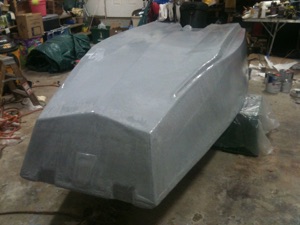
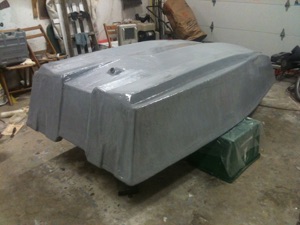
I took the opportunity to weigh the boat prior to applying the barrier coat. The boat weighed 112 lbs., which is pretty good, as I was planning on a finished weight of around 125 lbs. The foam core itself weighed about 35 lbs. So, the fiberglass added about 77 lbs. to the boat. It seems about right, and the barrier coat and gelcoat layers will probably add another 15 lbs., resulting in a total weight in the 125-130 lb. range.
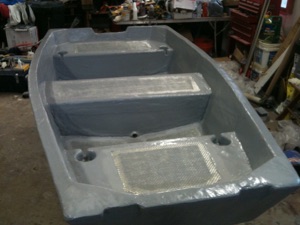
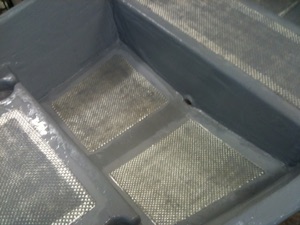
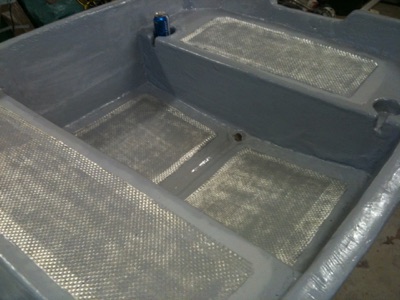
I used some ‘woven roving’ fiberglass fabric on the interior to create some ‘non-skid’ areas on the seats and floor. The pictures below are of the interior after applying the barrier/bonding coat and setting the non-skid areas in place.
Note the testing of the ‘off-shore’ style beverage holders integrated into the seats.
At this stage of the project, things are just about ready for gelcoating.
